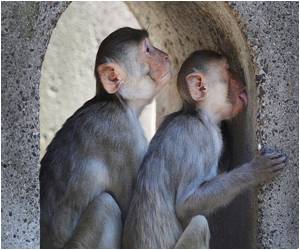An animal model of human hantavirus pulmonary syndrome (HPS) in rhesus macaques has been developed by National Institutes of Health (NIH) researchers.
An animal model of human hantavirus pulmonary syndrome (HPS) in rhesus macaques has been developed by National Institutes of Health (NIH) researchers. The study, conducted by researchers at NIH’s National Institute of Allergy and Infectious Diseases (NIAID), is published in the
Proceedings of the National Academy of Sciences.
People become infected with hantaviruses by inhaling virus from the urine, droppings or saliva of infected rodents. This infection can progress to HPS, a severe respiratory disease that was first identified in 1993 in the southwestern United States. HPS attained global attention in the summer of 2012 when physicians diagnosed 10 cases—three of them fatal—in Yosemite National Park in California. The primary HPS agents are Sin Nombre virus in North America and Andes virus in South America. Since 1993, the Centers for Disease Control and Prevention has reported approximately 600 HPS cases, including 200 deaths, in the United States; case numbers for South America are not available.
In their study, NIAID scientists infected healthy deer mice with Sin Nombre virus obtained from descendants of wild deer mice. The researchers then exposed 10 rhesus macaques to the virus derived from the newly infected deer mice. Nine monkeys became infected and seven developed severe disease. In the diseased macaques, researchers observed how and where the virus established infection, evaded the immune system and caused pneumonia. Of note, they report that, similar to hantavirus infection in people, the virus in the monkey model triggers a life-threatening immune response nearly two weeks after infection. NIAID researchers aim to identify biological markers during that initial timeframe that may be useful for early diagnosis.
Source-Eurekalert









